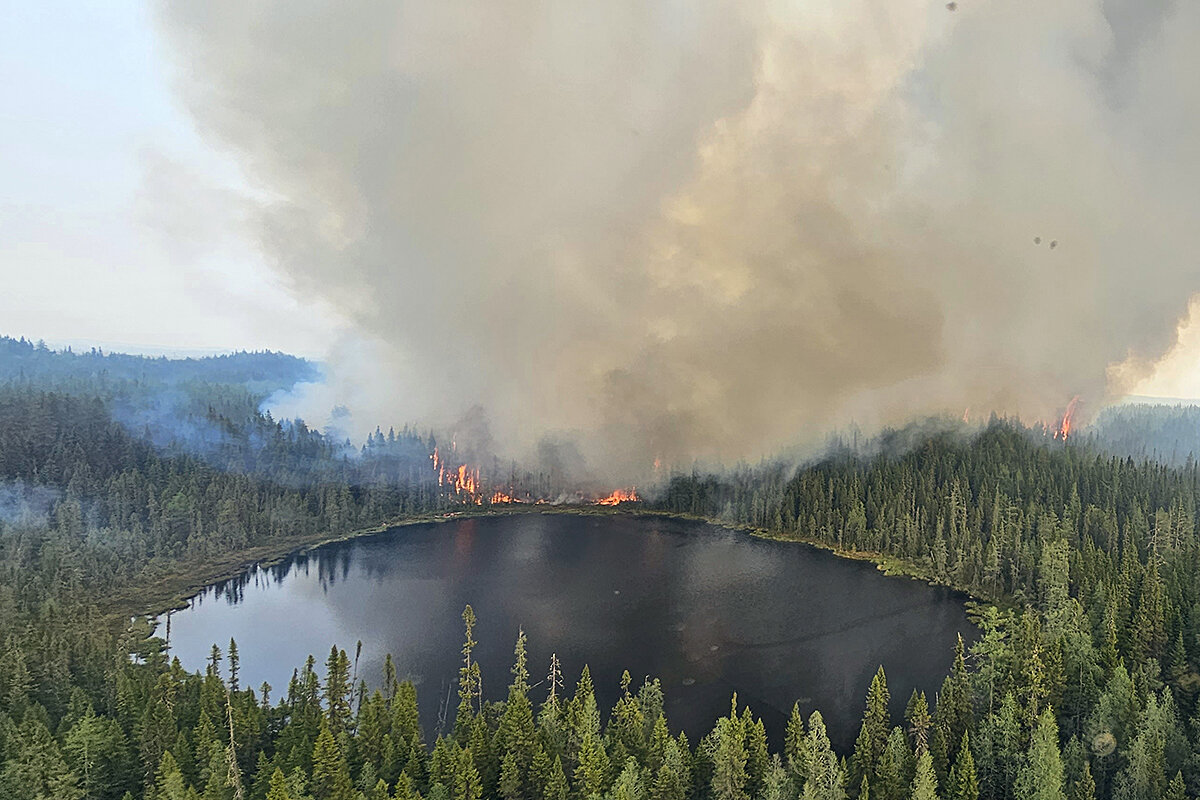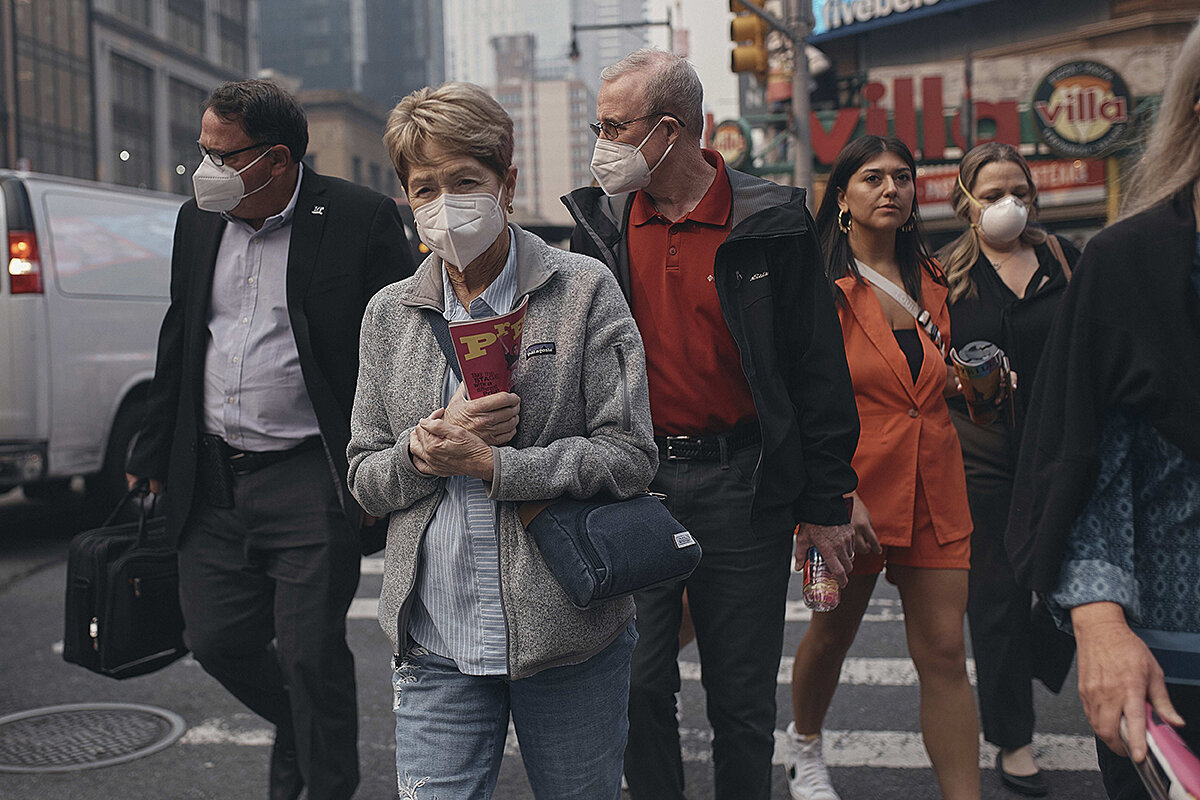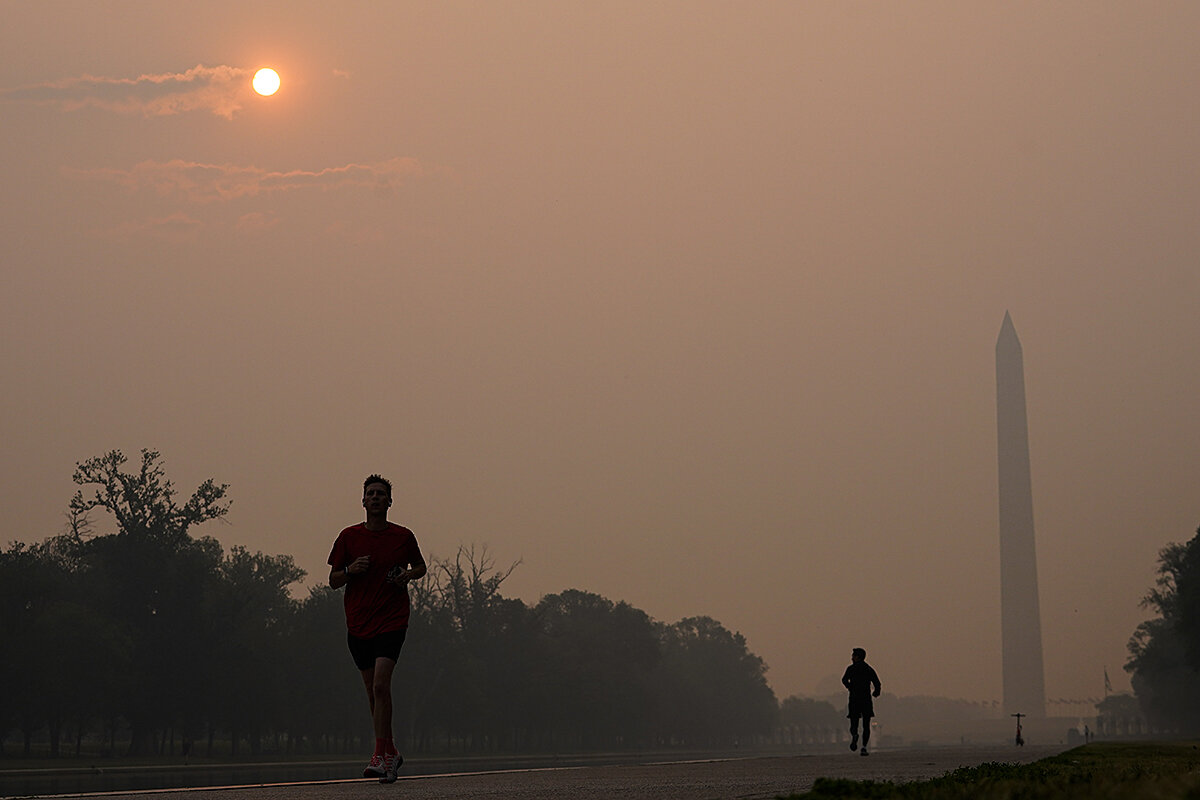Where there’s fire, there’s smoke: Public safety lesson for Eastern US
Loading...
Smoke from Canadian wildfires has shrouded the New York City skyline in a Halloween haze. The bitter air has reached the Great Lakes region of the United States and the mid-Atlantic, prompting public health warnings.
New York City notched its worst-on-record air pollution levels, exceeding what San Francisco experienced during 2018 wildfires in California. And air was deemed “very unhealthy” in the nation’s capital Thursday.
The severity of the smoke has startled communities living far from the fire-prone North American West, raising questions around local preparedness and safety. Here’s a look at the scope of the fires and alerts.
Why We Wrote This
A story focused onThe severity of Canadian wildfire smoke has startled the United States and may prompt Eastern communities to draw safety lessons from the fire-prone West.
How unusual are the Canadian fires, and what’s expected for the fire season ahead?
Wildfires can regenerate natural landscapes and are common in Canada. But a harsh start to the fire season has burned 9.4 million acres in recent weeks – around 15 times the 10-year average, Reuters reports. The sparks have come from a mix of lightning and possible human causes.
The coast-to-coast scope of the fires – and the pace of their spread – is something unusual since at least the 1980s, says Daniel Perrakis, a fire research scientist for the Department of Natural Resources of Canada. “There’s no way we can get enough firefighters to get around all these fires,” he adds. “Rain could come next week, but it might not come for months.”
“We’re seeing more and more of these fires because of climate change,” tweeted Prime Minister Justin Trudeau on Wednesday. Though individual fires are difficult to attribute directly to climate change due to their complexity, a 2022 United Nations report included it as one of multiple factors that increase wildfire risks globally. And much of Canada has had a warm and dry spring – a combination that becomes more likely due to warming global temperatures.
By contrast, the U.S. through July “expects a normal to below-normal fire potential in much of the Southwest, California, and Colorado due to snowpack and a wet spring,” says Nick Nauslar, a predictive services meteorologist at the National Interagency Fire Center. The Northwest, he adds in an email, “is likely to have above normal potential.”
How are communities coping with smoke?
Thousands of Canadians have evacuated. The wildfires are also unsettling Americans across the U.S. Midwest and Northeast regions, prompting school closures and early dismissals in New Jersey and delaying flights in cities from Washington to Boston. Officials in both countries urge affected residents to stay inside and use N95-style masks outdoors.
As New York City air quality hit a “hazardous” level Wednesday, Zach Iscol, emergency management commissioner, called for solidarity.
“If you’re young and healthy, please check in on your neighbors,” he said at a press conference. “Make sure that they have the information that they need to stay safe.”
In Toronto, Samantha Green says stepping outside “smells like we’re next to a campfire.” The family physician calls wildfire smoke a “complex soup of air pollutants.”
Speaking of high-efficiency particulate air filters, she says “people should stay inside and ensure that indoor air is clean by closing windows and using a HEPA filter if you have one – or at least ensuring that you have a good-quality filter,” says Dr. Green, president-elect of the Canadian Association of Physicians for the Environment.
Experts recommend citizens check local air quality alerts for help determining daily activities, like whether to go running outside. Canadians can see their city’s status through the federal Air Quality Health Index, while Americans can type their zip code into AirNow.gov.
It could take weeks or more to douse the fires in Quebec and beyond, even with U.S. aid in the firefighting. In the meantime, shifts in wind patterns will be a factor determining air quality.
What are potential solutions for mitigating wildfire smoke?
Exposure to massive wildfires “used to be kind of a once-in-a-lifetime thing,” says Keith Bein, an air quality researcher at the University of California, Davis. “Now it’s happening more frequently and it’s becoming almost every season.”
And region. He’s been fielding fire-related questions from friends on the East Coast. That informal knowledge-sharing speaks to lessons the rest of the country might learn from fire veterans out West.
Preparation and public awareness are key, say Western wildfire experts.
“The worst time to respond to a smoke event is while you’re in it,” says Sarah Coefield, an air quality specialist at the Missoula City-County Health Department in Montana. Her community holds an annual Wildfire Smoke Ready Week inspired by one in Washington state.
“We try to kind of flood the airwaves during the early summer,” Ms. Coefield adds. That’s when locals are “starting to think more about the incoming fire season – but it’s not here yet, so they have time to prepare.” She also directs people to MontanaWildfireSmoke.org for additional preparedness tips, including how to assemble a do-it-yourself fan and filter combo.
Another idea in development – public “clean air centers” for those vulnerable to smoke – resembles how “cooling centers” offer respite from extreme heat. California, through a pilot program, has begun to invest in these centers through ventilation system upgrades and purchasing portable air cleaners for buildings like libraries.









